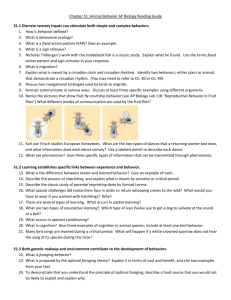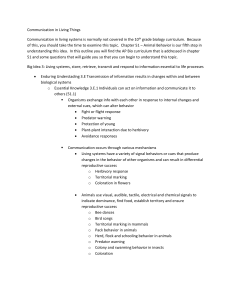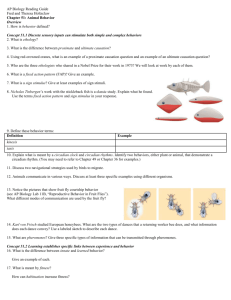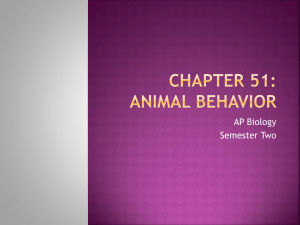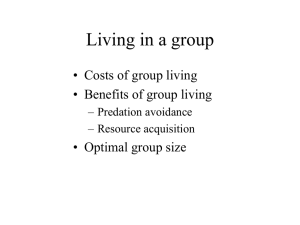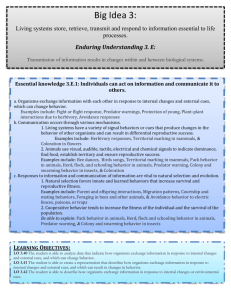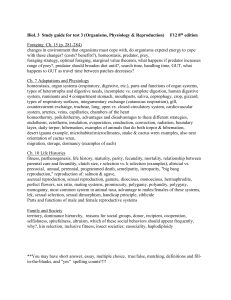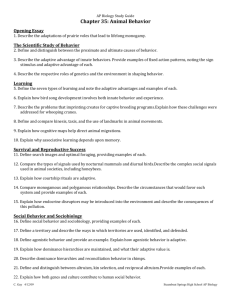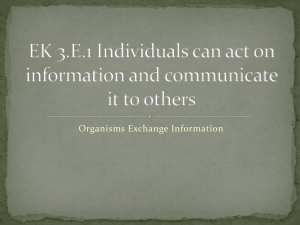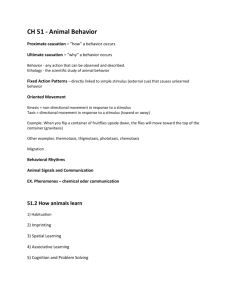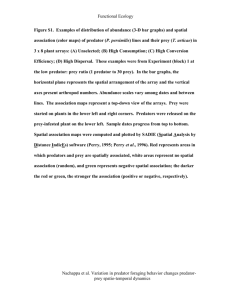Communication in Living Things Communication in living systems is
advertisement
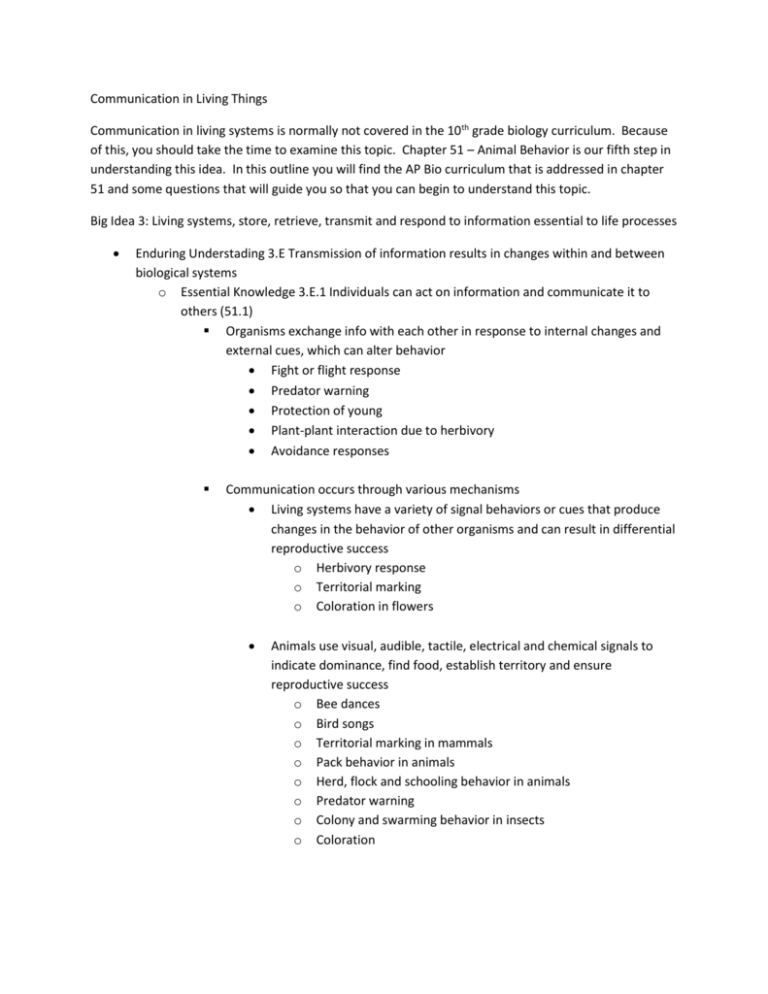
Communication in Living Things Communication in living systems is normally not covered in the 10th grade biology curriculum. Because of this, you should take the time to examine this topic. Chapter 51 – Animal Behavior is our fifth step in understanding this idea. In this outline you will find the AP Bio curriculum that is addressed in chapter 51 and some questions that will guide you so that you can begin to understand this topic. Big Idea 3: Living systems, store, retrieve, transmit and respond to information essential to life processes Enduring Understading 3.E Transmission of information results in changes within and between biological systems o Essential Knowledge 3.E.1 Individuals can act on information and communicate it to others (51.1) Organisms exchange info with each other in response to internal changes and external cues, which can alter behavior Fight or flight response Predator warning Protection of young Plant-plant interaction due to herbivory Avoidance responses Communication occurs through various mechanisms Living systems have a variety of signal behaviors or cues that produce changes in the behavior of other organisms and can result in differential reproductive success o Herbivory response o Territorial marking o Coloration in flowers Animals use visual, audible, tactile, electrical and chemical signals to indicate dominance, find food, establish territory and ensure reproductive success o Bee dances o Bird songs o Territorial marking in mammals o Pack behavior in animals o Herd, flock and schooling behavior in animals o Predator warning o Colony and swarming behavior in insects o Coloration Responses t information and communication of info are essential and vital to natural selection and evolution Natural selection favors innate and learned behaviors that increase survival and reproductive success o Parent / offspring interaction o Migration patterns o Courtship and mating behaviors o Foraging in bees and other animals o Avoidance behavior to electric fences, poisons, or traps Cooperative behavior tends to increase fitness of the individual and the survival of the population o Pack behavior in animals o Herd, flock and schooling behavior in animals o Predator warning o Colony and swarming behavior in insects 1. What is a fixed action pattern (FAP)? Give an example. 2. What is a sign stimulus? 3. Nicholas Tinbergen’s work with the stickleback fish is a classic study. Explain what he found using the terms fixed action pattern and sign stimulus in your response. 4. What is migration? 5. Explain what is meant by circadian clock and circadian rhythms. Identify two behaviors, either plant or animal, that demonstrates a circadian rhythm. 6. Discuss two navigational strategies used by birds to migrate. 7. Animals communicate in various ways. Discuss at least three specific examples using different organisms. 8. Karl von Frisch studied European honeybees. What are the two types of dances that a returning worker bee does, and what information does each dance convey? Use a labeled sketch to describe each dance. 9. What are pheromones? Give three specific types of information that can be transmitted through pheromones. 10. What is the difference between innate and learned behavior? Give an example of each. 11. Describe the process of imprinting, and explain what is meant by sensitive or critical period. 12. Describe the classic study of parental imprinting done by Konrad Lorenz. 13. There are several types of learning. What occurs in spatial learning? 14. What are two types of associative learning? Which type did Ivan Pavlov use to get a dog to salivate at the sound of a bell? 15. What occurs in operant conditioning? 16. What is cognition? Give three examples of cognition in animal species; include at least one bird behavior. 17. Many bird songs are learned during a critical period. What will happen if a white-crowned sparrow does not hear the song of its species during this time? 18. What is foraging behavior? 19. What is proposed by the optimal foraging theory? Explain it in terms of cost and benefit, and cite two examples from your text? 20. Explain each of these mating system: a. Promiscuity b. Monogamy c. Polygamy d. Polygyny e. Polyandry 21. Explain two factors that may be important in determining the evolution of these systems, and apply each factor to a particular species. 22. What is sexual selection? 23. Describe these types of sexual selection: a. Intersexual selection b. Intrasexual selection 24. What is agonistic behavior? Give one example of this behavior. 25. What is altruism? 26. Explain the evolutionary advantage to a population of having members who exhibit altruistic behavior. 27. Altruism may reduce the fitness of an individual - for example, by making that individual more obvious to a predator. Explain this behavior using the concept of inclusive fitness. 28. Contrast kin selection and reciprocal altruism.
